What is Calotropis Wick?
Calotropis Wicks (known in Tamil as Aintha Thandu Thiri or Arka Thiri) are handcrafted wicks made from the fibrous inner core of the Calotropis plant’s stem or bark. Traditionally used in South Indian rural households and temple rituals for lighting oil lamps (deepam), these wicks carry strong ritual and medicinal significance in Siddha and folk practices. The Calotropis wick is known for its potent cleansing energy and is often used in spiritual ceremonies to ward off negativity and protect against evil influences.
In Tamil Siddha medicine, Calotropis wicks are also valued for their purifying qualities, both in physical and subtle energetic applications. They are sometimes used in decoctions or fumigations for respiratory health and to alleviate certain skin ailments.
🌸 Spiritual Benefits of Calotropis Wicks
-
Strong Protection Against Negative Energies
Lighting lamps with Calotropis wicks is believed to create a protective shield that repels evil spirits, dhrishti dosham (evil eye), and malevolent forces.
-
Invokes Divine Grace & Courage
The fierce energy of Calotropis is said to invoke the blessings of protective deities such as Lord Narasimha and Goddess Durga, boosting courage and spiritual strength.
-
Purifies the Surrounding Aura
The smoke and flame from Calotropis wick lamps are thought to cleanse the subtle energies (pranic field) in homes and temples, purifying the atmosphere from negative vibrations.
-
Enhances Spiritual Vigilance & Focus
Lighting Calotropis wicks during meditation or rituals sharpens the mind, deepens concentration (dhyana), and aids in overcoming spiritual obstacles.
-
Balances Malefic Planetary Influences
Used during planetary unfavorable times such as Rahu Kalam or Ketu periods to mitigate malefic astrological effects.
-
Invokes Auspiciousness & Removal of Obstacles
Commonly used during Navaratri and protective poojas to remove obstacles (Vighna Nashak) and promote auspicious beginnings.
-
Stimulates Agni (Fire Element)
The burning wick symbolizes the fierce purifying fire that transforms and removes impurities on all levels—physical, mental, and spiritual.
🌍 Habitat of Calotropis
Calotropis is a hardy, drought-tolerant shrub commonly found across Tamil Nadu, Andhra Pradesh, and other tropical and semi-arid regions of India. It grows wild along roadsides, fields, and wastelands. The fibrous bark or stem is harvested carefully without harming the entire plant, usually during dry seasons. The fibers are cleaned, dried, and twisted into wicks used in traditional oil lamps, especially in village temples and homes.
🌟 Medicinal Properties of Calotropis Wicks
- Antimicrobial: The smoke has antimicrobial and antiseptic properties, believed to purify air and surroundings.
- Respiratory Aid: Used in fumigation for cough, asthma, and bronchitis relief in Siddha and folk medicine.
- Anti-inflammatory: Helps soothe minor skin inflammations and infections when applied as poultices or used in decoctions.
- Detoxifying: Supports the clearing of toxins via respiratory pathways and skin.
- Spiritual Detox: Used in rituals to cleanse negative energies and evil influences.
🧪 Active Compounds in Calotropis
- Cardiac glycosides (Calotropin) — potent bioactives affecting heart and muscle function
- Alkaloids — responsible for therapeutic and sometimes toxic effects
- Flavonoids — antioxidants and anti-inflammatory agents
- Resin and latex — contribute to antimicrobial and wound-healing properties
- Volatile oils — provide aroma and fumigant effects
🍵 Usage and Dosage
⚠️ Use only purified, pesticide-free Calotropis fibers. Internal medicinal use should only be under expert guidance due to plant toxicity.
- For Spiritual Lamp Lighting:
Use dried Calotropis wicks dipped in ghee or sesame oil in daily puja lamps or during protective rituals.
- For Respiratory Health (Fumigation):
Burn Calotropis wicks in a well-ventilated area to inhale the medicinal smoke for easing bronchial congestion or cough.
- For Skin Issues:
Calotropis decoctions or poultices made from bark (not wick) may be applied externally under guidance.
⚠️ Precautions
- Calotropis contains toxic latex; avoid ingestion without professional supervision.
- Not recommended for children, pregnant or breastfeeding women.
- Use fumigation in small, well-ventilated areas to avoid irritation.
- Avoid contact with eyes and open wounds.
- Store wicks in dry, airtight containers to prevent mold and degradation.
📦 Storage
- Keep Calotropis wicks dry and away from moisture and insects.
- Store in sealed containers in cool, dark places.
- Best used within 6 months for optimal spiritual and medicinal potency.
🌿 Organic and Ethical Considerations
- Harvest fibers sustainably without damaging whole plants.
- Choose organically grown or wildcrafted Calotropis free from pesticides.
- Support local artisans and cottage industries who handcraft these wicks traditionally.
- Promote zero-waste by utilizing all parts of the Calotropis plant for medicinal and ritual uses.
English: Calotropis Wick / Arka Wick
Tamil: ஐந்த தண்டு திரி (Aintha Thandu Thiri) / அர்க்க திரி (Arka Thiri)
Sanskrit: अर्क तन्तुः दीपबद्धः (Arka Tantuh Deepabaddhah)
Hindi: आक की बाती (Aak Ki Baati) / मदार बाती (Madar Baati)
Malayalam: എരുമാക്കൊന വിക്ക് (Erumaakkona Wick)
Telugu: జILLEDU తంతు దీపం (Jilledu Thantu Deepam)
Kannada: ಎಕೆಯಲ್ಲಿ ತಂತಿ ಬತ್ತಿ (Ekeyalli Thanti Batti)
Marathi: रूईच्या वाती (Ruichya Vaati)
Gujarati: આકડી વાટકી (Aakdi Vatki)
Urdu: مدار کی بتی (Madar Ki Batti)
Oriya (Odia): ଆକା ଦୀପା ବାତି (Aaka Deepa Bati)
Bengali: আকের বাতা (Aker Bata)
🧾 Nutritional Facts, Info & Dosage
Calotropis Wicks are not typically consumed as a food or nutritional supplement due to the plant’s potent alkaloids and latex-based compounds, which are toxic in higher doses. However, in traditional Siddha and folk medicine, very small, carefully prepared portions of the plant (not specifically the wick) are used under strict guidance for therapeutic fumigation or external application.
🔬 Phytochemical Composition (approximate, based on plant fiber analysis):
Note: These values refer to dry fiber and bark extracts used in external or fumigative preparations—not for nutritional intake.
- Cardiac Glycosides (Calotropin, Uscharin): Present in trace amounts – potent bioactives with physiological effects
- Alkaloids: Natural plant defense compounds – toxic in large doses, medicinal in micro doses
- Resin & Latex: Contains enzymes and antiseptic elements
- Flavonoids & Phenolics: Mild antioxidant and anti-inflammatory properties
- Fiber (Insoluble): Structural lignin and cellulose
- Essential Oils (Volatile Compounds): Offer aromatic and antimicrobial effects during burning
🧪 Traditional Usage (Under Siddha Guidance)
For Spiritual Use (Lamp Wick):
- Use dried Calotropis wick dipped in sesame oil or ghee.
- Burn during protective rituals, ancestral offerings, or planetary pacification rites (e.g., Rahu Kalam).
- Ideal timing: Evenings, Tuesdays, Saturdays, and during eclipse periods.
For Respiratory Relief (Fumigation):
- Burn 1 wick in a well-ventilated space.
- Inhale the smoke passively (not directly).
- Duration: 1–3 minutes, once per day as needed.
- Helpful for cold, sinus, asthma, or energetic clearing.
For Skin Disorders (External Use of Decoction):
- Prepare mild decoction by boiling a small piece of Calotropis bark or stem (not wick) in 200 ml water.
- Apply externally with cotton over itchy, infected, or inflamed skin.
- Never consume orally without expert supervision.
⚠️ Dosage and Safety Notes
- Internal use is not recommended unless prescribed by a qualified Siddha or Ayurvedic practitioner.
- Wick use is limited to lamp burning or fumigation.
- Children, pregnant women, and those with heart conditions should avoid exposure to Calotropis fumes or latex.
- Excessive exposure may cause eye irritation, nausea, or dizziness.
- Always use dry, mature plant parts—green latex-rich stems are highly potent and should not be handled casually.
🍽️ How To Consume, Use & Store
While Calotropis Wicks are primarily intended for spiritual use in oil lamps, certain traditional Siddha and folk medicine practices cautiously utilize parts of the Calotropis plant in external applications and fumigation therapies. Internal consumption is not advised without expert supervision due to the plant’s potent bioactive compounds and natural toxicity.
🔥 How To Use – Spiritually
For Lamp Lighting (Deepam Use):
- Use sun-dried Calotropis fiber wicks.
- Dip the wick in pure sesame oil or ghee.
- Light the wick in an earthen, brass, or silver lamp.
Ideal for use during:
- Navaratri, Amavasya, and Saturday pujas
- Rahu Kalam, Graha Dosha remedies
- Protective rituals, ancestral offerings (Pitru Pooja)
Spiritual Effects: Purifies aura, removes negative energy, calms planetary imbalances, invokes divine protection.
🌫️ How To Use – Medicinally (External Only)
For Respiratory Relief (Fumigation):
- Burn 1 small wick in a safe vessel in a well-ventilated space.
- Allow the smoke to gently spread throughout the room.
Useful for:
For Skin Infections (Topical Use):
- Prepare a mild decoction from Calotropis bark (not the wick).
- Dip cotton into the strained liquid and apply externally.
- Used for itching, boils, eczema, and skin irritations.
- Do not apply near eyes, open wounds, or sensitive skin.
⚠️ Not for Internal Consumption
- Calotropis is a medicinally toxic plant; its latex can cause vomiting, irritation, or cardiac distress.
- Never drink decoctions made from the wick without the supervision of a trained Siddha or Ayurvedic practitioner.
- Use only under strict dosage and expert monitoring if prescribed medicinally.
🏺 How To Store
- Store the wicks in a cool, dry place, away from moisture.
- Use airtight containers made of metal or glass to prevent mold and deterioration.
- Keep away from direct sunlight, insects, and humidity.
- Optionally, place dried neem leaves or camphor inside the storage container for natural insect repellent effect.
- Shelf life: Best used within 6 months for optimal aroma and potency.
🧿 Handling Tips
- Always use dried mature stems—avoid young green stems that ooze latex.
- Wear gloves if handling fresh Calotropis to avoid skin irritation.
- Wash hands thoroughly after touching any raw plant parts.
- Avoid use during pregnancy, lactation, or with infants in the home.
⚠️ Caution, Tips & Harvesting
⚠️ Caution (Safety First)
- Toxic Latex Warning:
Calotropis (especially the green stem and leaves) contains a milky latex that is toxic if ingested or if it comes into contact with the eyes or broken skin. It can cause skin irritation, vomiting, or heart irregularities.
- Not for Children or Pregnant Women:
Avoid using Calotropis-based products around infants, young children, pregnant or lactating women due to its strong fumes and potential allergenic effects.
- Use in Ventilated Areas:
When burning Calotropis wicks for fumigation, ensure there is good airflow. The smoke can be overpowering or irritating to sensitive individuals.
- External Use Only (unless directed):
Internal use of any part of Calotropis must be prescribed by a qualified Siddha or Ayurvedic practitioner. Never consume decoctions made from the wick casually.
- Latex Sensitivity:
Wear gloves while handling fresh Calotropis. Some people may develop contact dermatitis or allergic reactions.
💡 Traditional Tips
- Best Lighting Time:
Use Calotropis wicks during Amavasya, Rahu Kalam, Saturdays, or during Navagraha Shanti rituals for maximum spiritual effect.
- Pairing Tip:
Burning Calotropis wicks in lamps with black sesame oil enhances their protective and purifying effects during pitru (ancestral) rituals.
- Neutralize Potency (For Decoction):
If using decoction externally, it is sometimes combined with turmeric, neem, or buttermilk to reduce its harshness.
- Use Along with Cow Dung Cakes or Sambrani (Benzoin):
In rural homes, wicks are often burned with these for combined healing, disinfecting, and spiritually elevating aroma.
🌿 Harvesting & Preparation
Plant Identification:
Calotropis gigantea and Calotropis procera are the two main species used. Recognizable by their thick, velvety leaves, milky sap, and pale violet or white flowers.
Harvest Time:
Harvest mature, dried stems or branches (preferably 6–12 months old) during dry seasons. Avoid harvesting during flowering or rainy periods.
Preparation of Wicks:
- Peel off the outer bark carefully.
- Extract the inner fibrous strands from the stem.
- Wash gently in warm water to remove excess latex.
- Sun-dry for 3–5 days until fully dehydrated.
- Twist into thin wicks by hand or using a natural twining method.
- Store in an airtight, dry container.
Ethical Harvesting:
Only take what is needed. Calotropis is a hardy plant, but avoid overharvesting or uprooting young plants. Support cultivation in controlled or managed environments.


 SCIENTIFICALLY TESTED & COMPLETELY SAFE. SUITABLE FOR VEGETARIANS. NOT TESTED ON ANIMALS/NO ANIMAL INGREDIENTS. NO KNOWN SIDE EFFECTS. COMPLETELY SAFE. NON-TOXIC. FREE FROM HEAVY METALS
SCIENTIFICALLY TESTED & COMPLETELY SAFE. SUITABLE FOR VEGETARIANS. NOT TESTED ON ANIMALS/NO ANIMAL INGREDIENTS. NO KNOWN SIDE EFFECTS. COMPLETELY SAFE. NON-TOXIC. FREE FROM HEAVY METALS 

 The Food and Drug Administration has not evaluated these Statements. This product is classified as an “Herbal Food Supplement” and is not designed to diagnose, treat, cure, or prevent any disease. If you have any underlying health conditions, please consult a healthcare professional before using this product
The Food and Drug Administration has not evaluated these Statements. This product is classified as an “Herbal Food Supplement” and is not designed to diagnose, treat, cure, or prevent any disease. If you have any underlying health conditions, please consult a healthcare professional before using this product 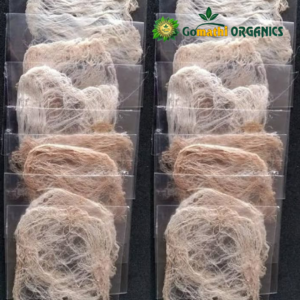
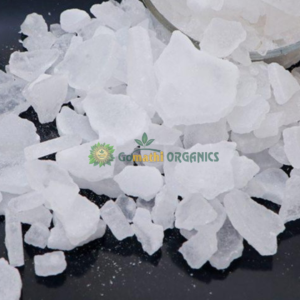
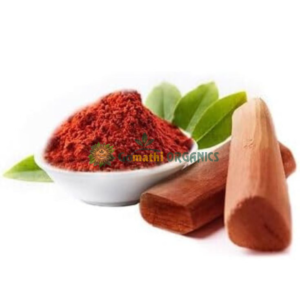
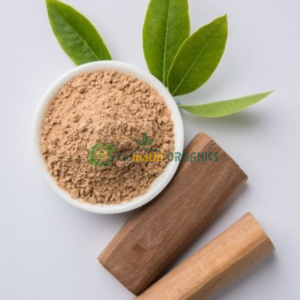
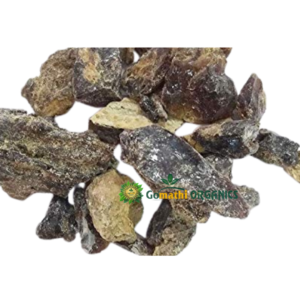
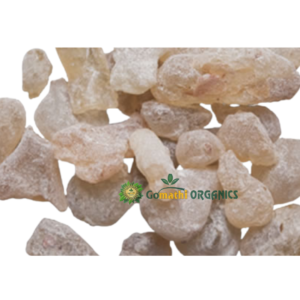

Reviews
There are no reviews yet.